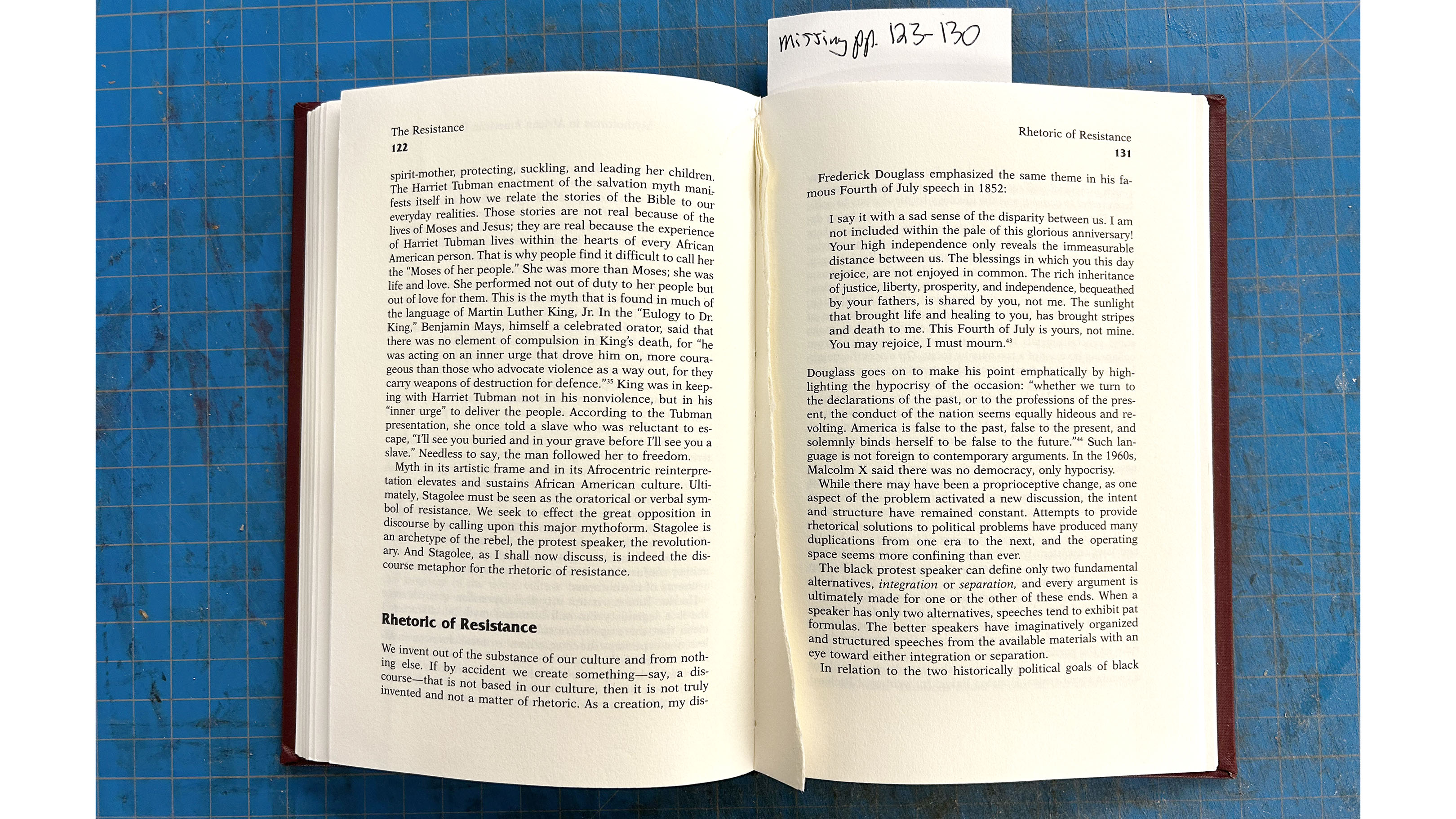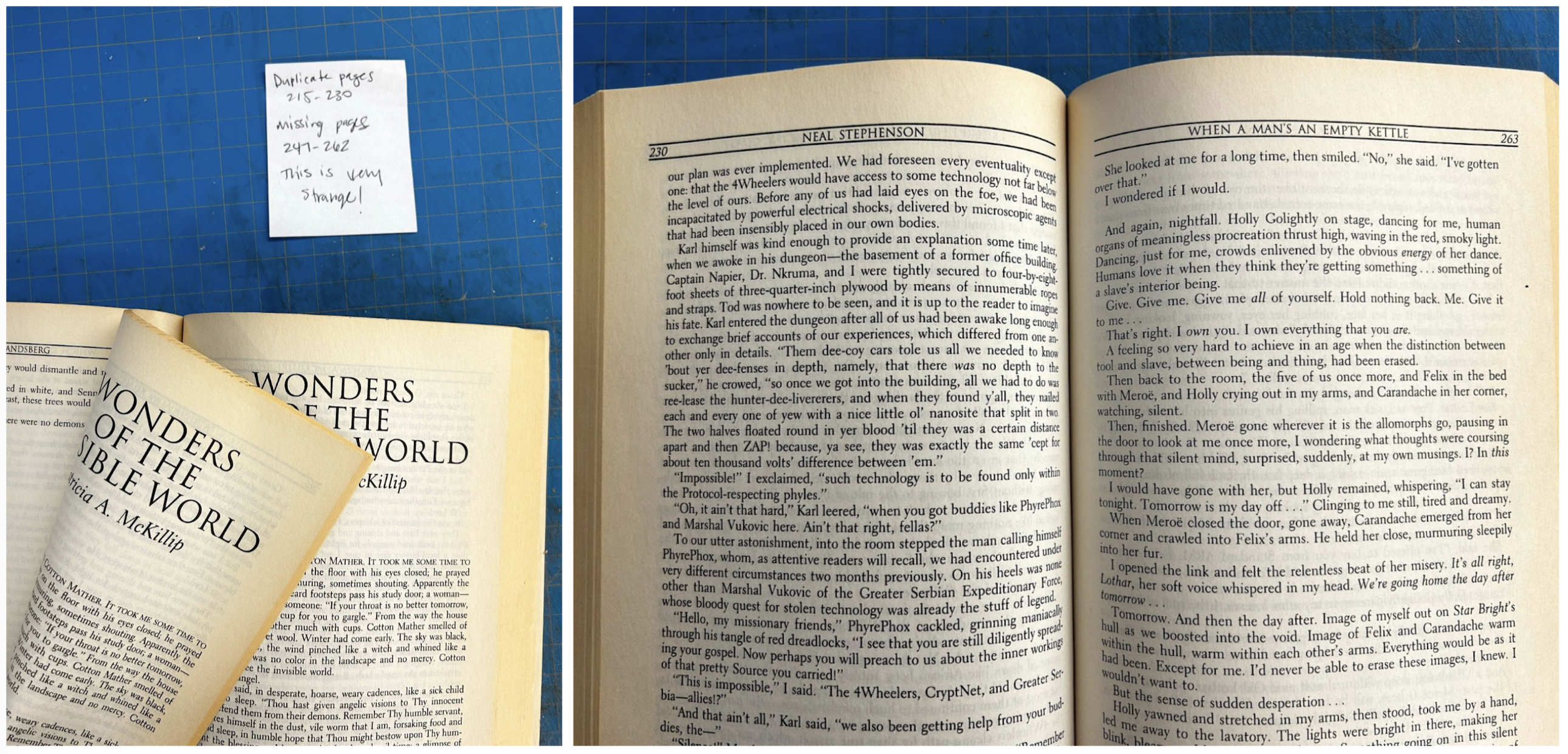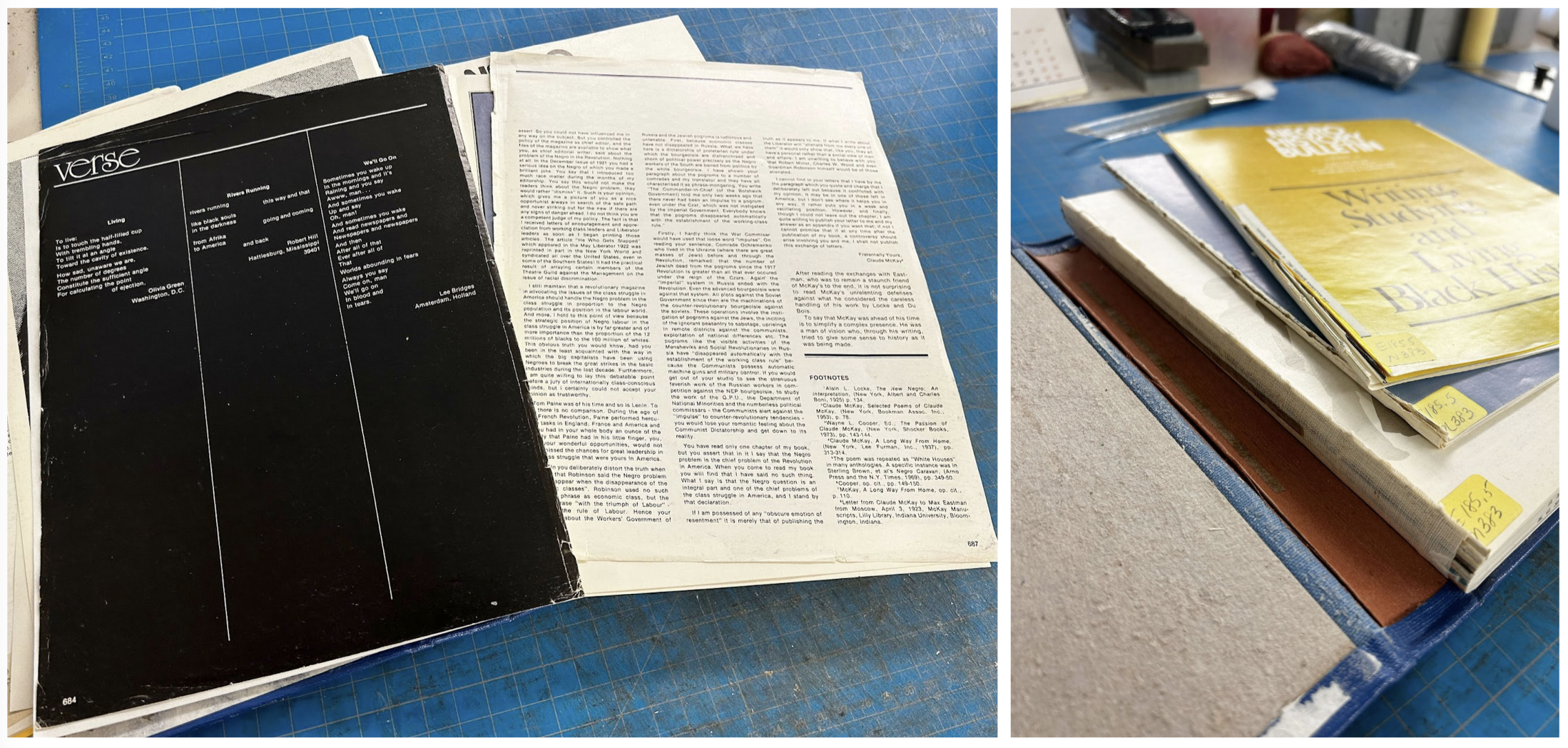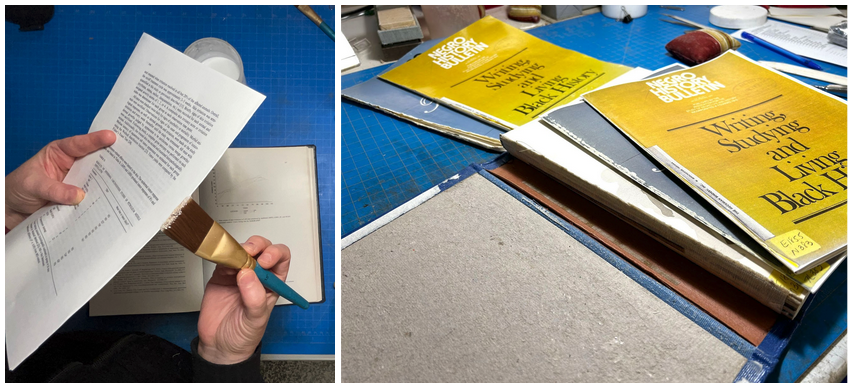
A damaged book has been sent to Preservation because multiple pages were torn out.

A damaged book has been sent to Preservation because multiple pages were torn out.
Welcome back to the Book Spa, where the Preservation unit of the Special Collections Research Center shows you how we care for and rehabilitate books that are in the midst of a hard life. This time around we will show you what we do when books have lost some pages.
It’s genuinely sad when a book comes through with missing pages - like it’s lost part of its soul. It’s a beautiful thing to have the chance to make it whole again.
Sometimes it's an honest mistake - pages get torn or stained, or a publisher makes an error. In this case they accidentally included 2 sections of pages 215-230, leaving out pages 247-262.

But more often than not, these pages are intentionally taken or made illegible by someone. They’ve been torn or cut out or overly notated. I like to think that when we see books with missing pages, the offense took place many years ago when photocopies were expensive or unavailable. We have hope that we will see fewer and fewer of these issues because we are living in a time of more convenient technology. Nowadays people can simply scan or take pictures of the pages they need.
But in the meantime, there are still plenty of incomplete books in the stacks. So how do we fix them? We will order a copy of the same edition through Interlibrary Loan, make photocopies and reattach them to the text block. It’s critical that it’s the same edition, or else the content won’t match and we can’t make one-to-one replacements. More often than you might imagine, the book that comes from another library has the same pages missing, indicating that the chapter or article had broad interest at some point.

In addition to the missing pages, we have to be aware of the indirect damage that happens to neighboring pages when a page is removed. When someone uses a blade to slice out the pages, they can cut too deeply and slice into the surrounding pages. Similarly, when pages are torn out of a book that has folded and sewn sections, it compromises the structure of the whole section. When one page is torn out, it puts its conjugate (the page opposite the fold) in danger of falling out as well.
To make sure we don’t miss anything, we will go through the entire book, page by page, to find all the pages that might have been removed or damaged. We don’t want to waste the opportunity we have with the duplicate book only to find more affected pages after we’ve returned it!

Then it’s a matter of photocopying the pages, being sure to line them up so the text is matched up on the front and back. We use acid free paper that is slightly off-white to better match older paper. We’ll trim down the copies to the size of the book, paying attention to match the existing margins and spacing.

If the book is adhesive bound, we will tip in the individual pages with PVA glue or incorporate the replacement pages into an adhesive bind. If it is sewn, we will either hinge the affected pages with Japanese tissue, or rebuild the folded sections and sew them on while doing a more extensive rebind.

Replacing pages can be one of the more satisfying repairs we do. When the whole book is back together in one piece, knowing the pitiful state it had been in before, it really feels like we’ve achieved something worthwhile and honored the work that the author put into creating it.
If you have any questions or are interested in viewing Special Collections materials, please contact us at library_specialcollections@ncsu.edu or submit a request online. The Special Collections Research Center is open by appointment only. Appointments are available Monday–Friday, 9am–6pm and Saturday, 1pm–5pm. Requests for a Saturday appointment must be received no later than Tuesday of the same week.